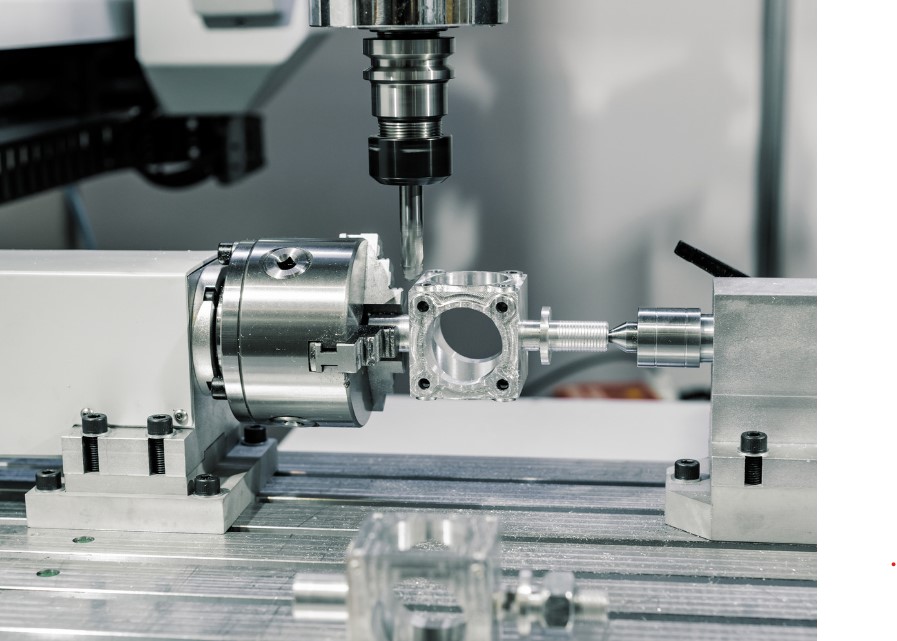Computer Numerical Control (CNC) which is a method of cutting and machining, has revolutionized engineering and manufacturing over the past few years. CNC machineries, which combine technological advancements with traditional manufacturing processes, is now a dominant way to manufacture precision products and components that are used in a range of industries. This article explores the mechanics and advantages and diverse applications of CNC milling, while highlighting its revolutionary impact on engineering technology of the present.
The Mechanics of CNC Machining
CNC machining is a subtractive process of manufacturing which means it takes material from a solid block or workpiece to give it the shape you want. The computer software used to control the machine movements is pre-programmed. The code that is generated for CNC machines differs based on the type of machine and on the complexity of the item being made. The basic concept remains the same: a high speed cutter is meticulously shaves material to produce the final product.

The accuracy of CNC machining is one of its most significant benefits. Its digital nature permits consistent and accurate production. This helps reduce human error while ensuring consistency across batches. This is crucial in the fields of medical devices, aerospace and manufacturing for automobiles, where tiny deviations could have severe consequences.
The role of digitalised computers in CNC machine operation
Digital technology is the foundation of CNC manufacturing’s accuracy and efficiency. CNC machines operate using specially designed software that controls every phase of manufacturing. This software converts computer-aided design (CAD) models into a series of precise instructions, which the CNC machine then follows to create the part. The instructions are able to dictate everything from the speed and direction of the tool used to cut, as well as the depth and angle of each cut.
In larger-scale industrial facilities computers are typically integrated directly into the CNC machines to allow for seamless communication and control. This integration permits real-time monitoring that ensures high performance and minimizes downtime. CNC machining can be automated to facilitate continuous operations, increasing efficiency and reducing lead times.
CNC Machining Advantages
CNC machining has numerous advantages over traditional manufacturing methods. The ability to create intricate and complex parts with high precision is one of the most significant advantages. CNC processing is precise and eliminates the need to make manual adjustments or Rework. This cuts down on waste and increases efficiency. CNC machines also have the ability to operate continuously. This makes them perfect for large-scale production runs.
Another benefit is the versatility of CNC machine. The same machine is able to produce a wide variety of parts simply by changing the program. This adaptability allows CNC the machine suitable for prototyping and mass production, which allows manufacturers to quickly respond to changes in market demand.
Automatization of CNC machines improves safety at work. By reducing the need for manual intervention, the chance of injuries and accidents are diminished. The high-quality and consistent performance of CNC machines improves the performance and reliability of the product, and contributes to the satisfaction of customers.
Industries benefited from CNC Machining Services
CNC machines are used in a myriad of industries. Each benefiting from its precision, efficiency and adaptability. CNC machines are utilized in the aerospace industry to make critical components which must meet rigorous safety and performance requirements. CNC machines are used in the medical device sector to make complex implants and surgical instruments in which precision is essential.
The automotive industry utilizes CNC machining to manufacture engine parts, transmission parts, and intricate interior and exterior features. The electronics industry also benefits from CNC machineries, which are able to create small, intricate components for consumer electronics and communication devices. Jewelry and art industries rely on CNC technology to make intricate designs and custom pieces.
The Future of CNC Machining
As technology continues to advance and improve, the capabilities of CNC machines are expected to grow further. Multi-axis machine machining and additive manufacturing integration are expected to continue pushing CNC technology’s limits. Furthermore, machine learning and AI will boost CNC machine efficiency.
In conclusion, CNC machining has profoundly revolutionized manufacturing and engineering, offering unparalleled precision, efficiency, as well as flexibility. The capability to make high-quality, complex parts can make CNC machining an indispensable tool in many industries. CNC is machining, even as the technology advances will remain an essential component of manufacturing’s future.